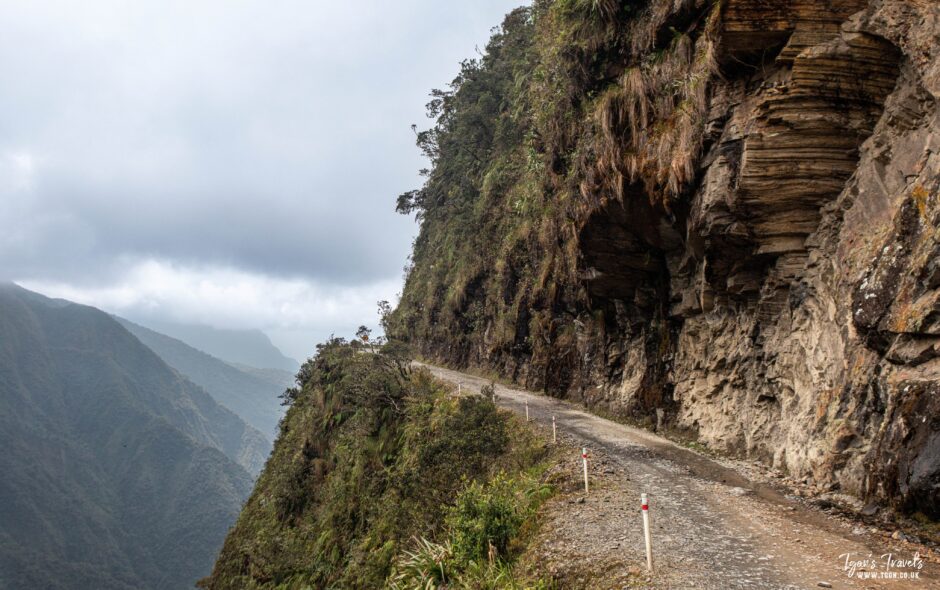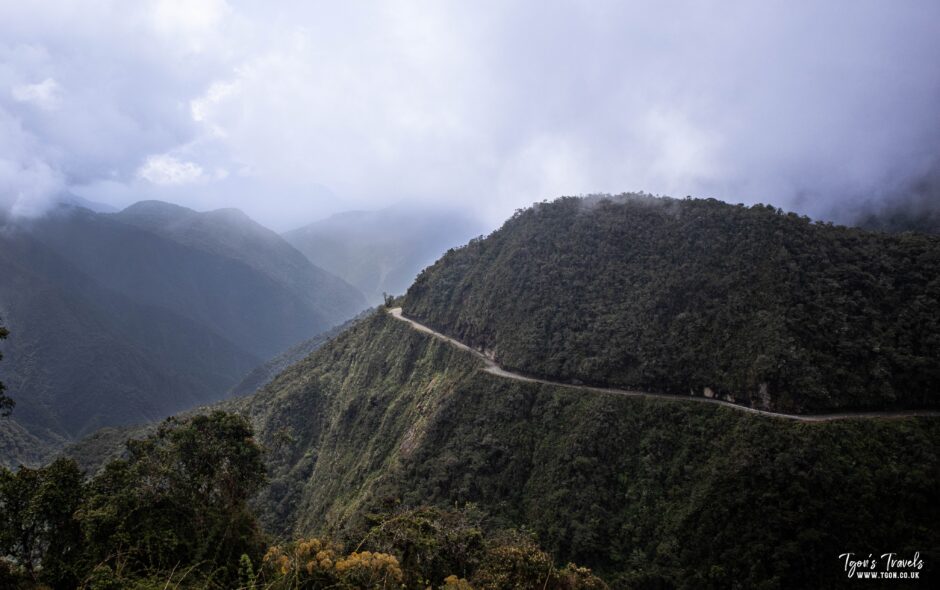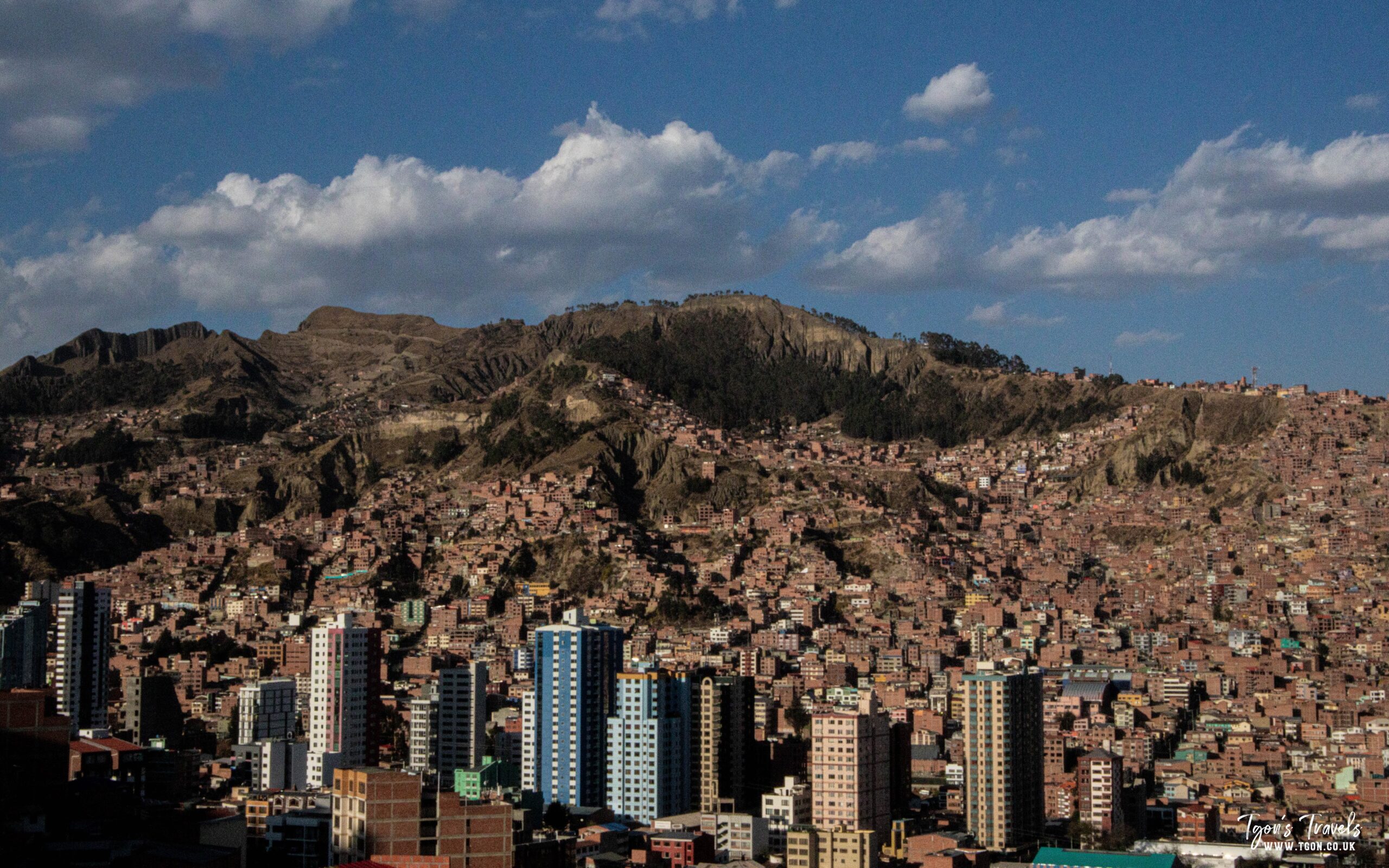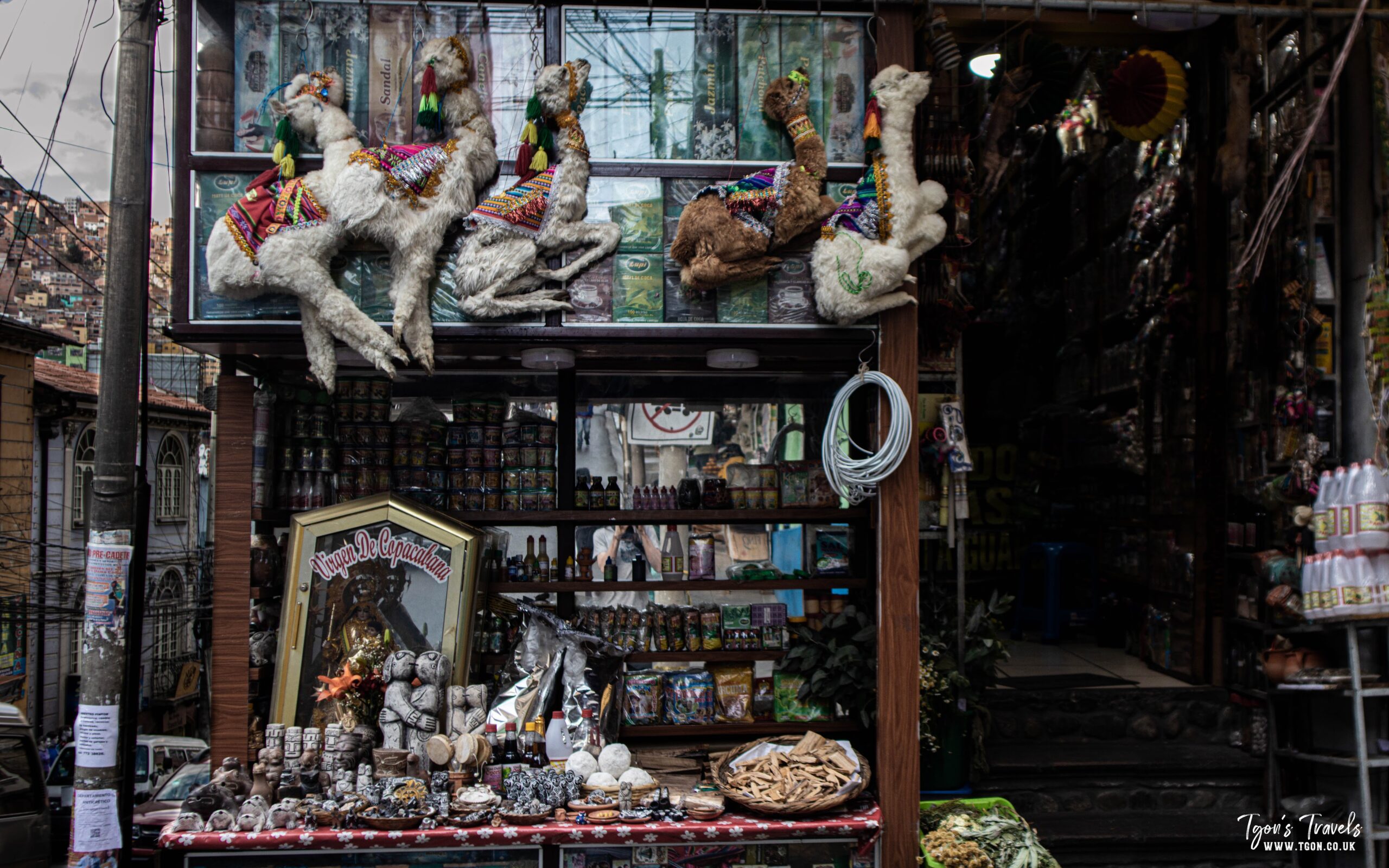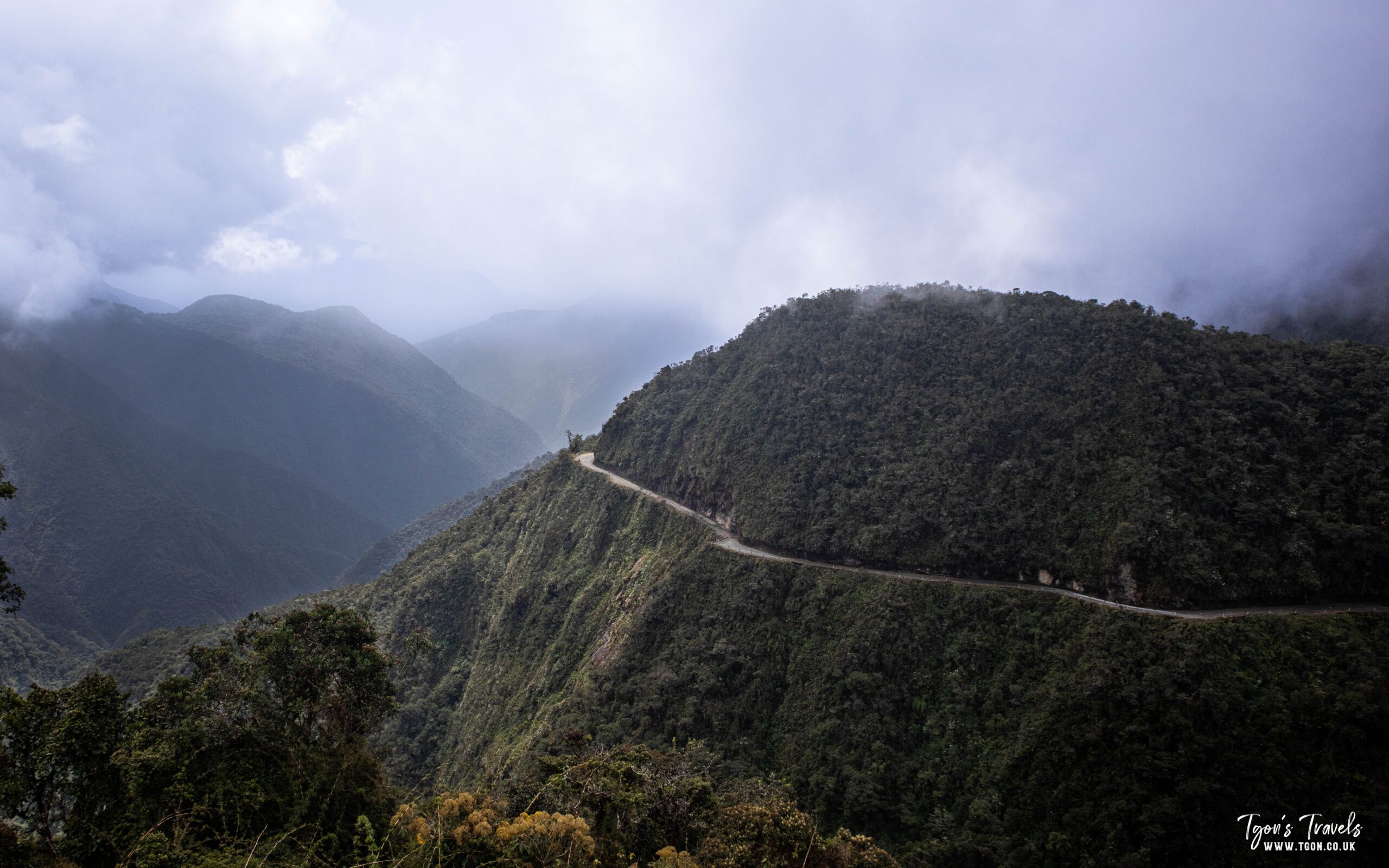The Bolivian ‘Death Road’ got it’s name from the number of traffic accidents that happened on the road. Most of them occurred when vehicles tried to pass each other on the narrow roads and rolled down the mountain. The road was built to link La Paz with the Amazonian areas of Brazil. It was started using labour from prisoners of war from Paraguay. Because of the number of deaths on the road, the Bolivian government completed a new road in 2006. Since then the road gets very little use, other than tourists on bike tours who are driven there from La Paz, go down the hill then are driven back to La Paz again. So the road is actually very safe, peaceful and beautiful to ride down.

Heading down the ‘Death Road’
I started my week by waking up in the viewpoint at the top of the ‘Death road’. The view was amazing, especially as I hadn’t been able to see more than a meter in front of my face the night before. Before I set off, I waited for the tour groups to leave so that I could take my time without them passing me. While I was waiting, I met a couple who were travelling in their small campervan with their 9 month old baby. It’s always nice to meet and chat with fellow travellers, especially when they are coming from the direction you are heading in. They recommended a riverside camping spot further on my route. We wished each other luck and then I started cycling down the road. The views were so refreshing after the desert landscapes I have been in for the lase few months. Tropical forest covered mountains with birds singing in the trees. Really wonderful.

I got to the checkpoint which is maybe half way down the road. That’s when I noticed that I had dropped my powerbank somewhere on the road. I left my bike at the checkpoint and started walking back up the mountain to see if I could see it. Luckily the ambulance driver, who waits at the checkpoint, was kind enough to drive me up the hill to look. It’s a good job that he did, because the powerbank was right up near the top of the road. I was so grateful. I didn’t know what I would do without the powerbank. Without it I can’t use my solar charger and can’t recharge any of my equipment. I thanked him, passed through the checkpoint and then found another viewpoint that I decided to camp in for the night.

The road to Caranavi
In the morning I sat listening to the birds singing and made some recordings of the sounds before I packed up and continued down through the mountains. I spent a day resting in a hostel in the valley at the bottom of the road before taking the road to Caranavi. Honestly, there isn’t much difference between the standard of the ‘Death Road’ and the rest of the road to Caranavi. Both of them are terrible and gravel covered, passing through mountains. I thought that passing down the ‘Death Road’ would take me out of the Andes and that I would be on more level ground. But I was mistaken. The Andes gently get smaller and smaller for hundreds of kilometers yet. It was a long days ride to Caranavi and when I arrived, the city didn’t look nice at all. It basically looked like a huge truck stop. But I stayed there a day or so and it looked a lot better with a fresh pair of eyes after a nights sleep. The city is sat in the mountains, with wonderful views as you look out of the city. It was while taking a rest day here that I met a French couple who were also cycling into the Amazon. We decided to travel together for the next week as our routes will separate in a town called San Borja. They will head East to Trinidad and I will head north. But we can talk about that next week.

